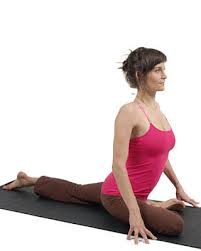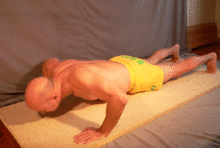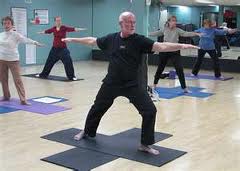Introduction
Pilates is a physical fitness system developed in the early 20th century by German-born Joseph Pilates who described his method as the art of controlled movements. If practiced with consistency, Pilates will improve flexibility, muscle strength, endurance, and motor control in the whole human body. It puts emphasis on developing a strong core, body alignment, coordination and balance. Pilates’ system allows for different exercises to be modified in range of difficulty and intensity from beginning to advanced as the body conditions and adapts to the exercises. At first, to the beginner, Pilates may seem easy, that it does not produce a good work out. However, as your proficiency in performing the exercises improves Pilates gets harder and harder. As your body changes and your skills increase, your ability to work with precision and at a higher intensity will change the nature of each exercise. It is said that there are no plateaus in Pilates. Pilates can be safely and successfully used for post-injury rehabilitation, post pregnancy conditioning, to serve as a safe environment to begin an exercise program for the older adult, and to enhance athletic abilities, especially in sports that require higher levels of muscle control, balance and coordination such as dance, gymnastics and figure skating. Read more…
Pilates’ system allows for different exercises to be modified in range of difficulty and intensity from beginning to advanced as the body conditions and adapts to the exercises. At first, to the beginner, Pilates may seem easy, that it does not produce a good work out. However, as your proficiency in performing the exercises improves Pilates gets harder and harder. As your body changes and your skills increase, your ability to work with precision and at a higher intensity will change the nature of each exercise. It is said that there are no plateaus in Pilates. Pilates can be safely and successfully used for post-injury rehabilitation, post pregnancy conditioning, to serve as a safe environment to begin an exercise program for the older adult, and to enhance athletic abilities, especially in sports that require higher levels of muscle control, balance and coordination such as dance, gymnastics and figure skating. Read more…
Introduction
Yin and Yang
Yin Yoga is based on the Taoist concept of yin and yang, opposite and complementary principles in nature. Yin is the stable, unmoving, hidden aspect of an object, while Yang is its changing, moving, revealing aspect. These two objects always coexist, and everything in nature can be described in terms of its yin and yang.
All forms of yoga can be described as Yin or Yang based on which tissues of the body are being targeted. A practise that focuses on gentle traction and the stretching of ligaments, tendons and fascia (connective tissue) is Yin yoga and a practise that focuses on exercising and stressing the muscles is Yang yoga.
Read more…
Introduction
One of the most common excuses used by people that do not exercise is that they cannot afford the membership of a gym or to buy home exercise equipment. Fortunately, you don’t need to spend money on either of these to get a good muscle strengthening workout. The solution is simple and not fancy, just use your body weight as your resistance tool. By utilizing the “overload” principal of strength training (a greater than normal stress or load on the body is required for training adaptation to take place) and one’s own body weight as the load, an effective strength gaining program can be developed. Exercises such as push-ups, chin-ups, and sit-ups are some of the most commonly known and used  bodyweight strength training exercises. This form of resistance training is excellent at developing tone and endurance in the muscles. Read more…
bodyweight strength training exercises. This form of resistance training is excellent at developing tone and endurance in the muscles. Read more…
The Myofascia
1. What is It
Fascia or myofascia is the dense, tough tissue which surrounds and covers all of your muscles and bones. This outer fascial covering is very strong and very flexible. In fact, it has a tensile strength of over 2000 pounds.
Under a microscope, myofascia resembles a spider web or fish net. It is very organized and very flexible in a healthy state.

Myofascia can best be described as a complete body suit which runs from the top of your head down to the bottom of your toes. It is continuous, has no beginning or end and can be found almost everywhere in your body. Like yarn in a sweater the entire body is connected to every other part of the body by the fascia. It is a continuous weave of material. And, like a pull in a sweater, damage to an area of fascia can affect other distant areas in your body even years later. Read more…
 Core, core, core, you have to strengthen your core. If there is one word that has caught the fancy of the fitness industry it is the word “core”. But what is the core, why is become so important and how best do we go about exercising our core. These are important questions that need to be answered because “the core” is vitally important for our physical health. A strong core not only improves our posture, prevents back pain, improves our balance and athletic performance but for the older adult it prevents functional disability. Read more…
Core, core, core, you have to strengthen your core. If there is one word that has caught the fancy of the fitness industry it is the word “core”. But what is the core, why is become so important and how best do we go about exercising our core. These are important questions that need to be answered because “the core” is vitally important for our physical health. A strong core not only improves our posture, prevents back pain, improves our balance and athletic performance but for the older adult it prevents functional disability. Read more…
Good posture is important for your physical and emotional health. Good posture is defined as your head, neck, shoulders, hips and feet all in proper alignment relative to each other. When a person is viewed from the side, this means that the person stands tall with the head facing forward, with the neck over the shoulders and not protruding forward. The shoulders are back, not rounded and the hips are placed over the feet. There is no excessive roundness of the upper back (khyphosis) or excessive inward curvature of the lower back (lordosis). Viewed from the front, the persons head is straight and not tilted to the right or left, the shoulders are level as are the hips. The feet point straight ahead and are not rotated out or in.
 Good posture illustrated
Good posture illustrated
Read more…
Agility ahttp://forever-active.com/wp-admin/plugins.phpnd balance training is not just for older adults who are the most vulnerable to injuries related to falls. Recent research has indicated that agility balance training has positive benefits for all age groups including the competitive and recreational athlete.
In older age groups, there is a gradual decline, as a function of ageing, in sensory (eyes and ears), motor (muscles, tendons and joints), and cognitive (reasoning, memory) function which affects this population’s ability to maintain good agility and balance as they move and change position. As a result, falls resulting in fractured wrist, shoulders and hips are a frequent occurrence. However, in the general population, because of previous injury to joints such as ankles, hips and lower back and shoulders, a lack of muscle strength and endurance in the legs due to a lack of physical activity and mental fatigue and emotional stress from work and family life, a younger person’s agility and balance can be compromised as well, and this can have a big effect on that person’s ability to perform athletically and maintain an active lifestyle. Read more…
For as many people that exercise there are excuses not to continue to exercise. Some of these excuses are relatively legitimate. There are times in our lives that exercise just does fit, that it would cause too much stress to take the time to exercise or it would increase the risk of physical injury. However, these “legitimate excuses” are rare and in most cases people can modify their busy life and work schedule or the intensity of their exercise to make it work.
Excuses not to exercise can be classified as being externally or internally founded. Externally, excuses range from the gym is too far away, it is too hot/cold/wet, I have no one to work out with, my favourite instructor/personal trainer is away, work is too busy, my gym clothes are dirty etc., etc. 99.9% of these external excuses are easily managed with a little planning to your schedule and motivation to really want to exercise. Exercise is fun and most people agree that once they begin an exercise session they enjoy it and are glad they have made the effort to do it even if it meant changing or reprioritizing their schedule.
Read more…
In the general public there is much confusion about stretching. Common questions I hear are, is it necessary, am I too old, which muscles need to be stretched, how long do I stretch for, is dynamic stretching better than static stretching? In the professional world of physical fitness and athletics there is no such confusion. Stretching is necessary and should be an integral component of everyone’s exercise routine.
The benefits of stretching are far reaching and vitally important for men and ladies 50+ . The most important benefit is injury prevention. Gentle dynamic stretching in needed before you begin exercising to make sure your muscles are warmed up and loose and gentle static stretching after exercise is necessary to prevent soft tissue contracture and stiffness. Another important benefit of stretching is that it allows you to mentally prepare to exercise. This is especially important if you have had a busy day at work and had to rush to the gym, field or arena to exercise. Stretching allows you a few moments to regroup and refocus on your upcoming exercise routine, run, bike ride, walk or game. This way you are not only physically prepared but mentally prepared as well. After you exercise stretching allows you a few moments to relax and reflect on your exercise or game. It gives you an opportunity to cool down gently rather than abruptly. Read more…
Exercising is not hard, however, for many people, especially older adults, knowing how, when and where to start exercising is the challenge. Unfortunately, it is a common held belief that you need sophisticated equipment, or be a member of an expensive fitness facility to start exercising. This is simple just not the case.
Most people exercise every day by just walking but many don’t consider this “formal exercise”. Maybe that is because it is easy to do and something you can do any time, anywhere. But walking is an excellent form of cardiovascular exercise and walking has many other health benefits such as;
Read more…
 Pilates’ system allows for different exercises to be modified in range of difficulty and intensity from beginning to advanced as the body conditions and adapts to the exercises. At first, to the beginner, Pilates may seem easy, that it does not produce a good work out. However, as your proficiency in performing the exercises improves Pilates gets harder and harder. As your body changes and your skills increase, your ability to work with precision and at a higher intensity will change the nature of each exercise. It is said that there are no plateaus in Pilates. Pilates can be safely and successfully used for post-injury rehabilitation, post pregnancy conditioning, to serve as a safe environment to begin an exercise program for the older adult, and to enhance athletic abilities, especially in sports that require higher levels of muscle control, balance and coordination such as dance, gymnastics and figure skating. Read more…
Pilates’ system allows for different exercises to be modified in range of difficulty and intensity from beginning to advanced as the body conditions and adapts to the exercises. At first, to the beginner, Pilates may seem easy, that it does not produce a good work out. However, as your proficiency in performing the exercises improves Pilates gets harder and harder. As your body changes and your skills increase, your ability to work with precision and at a higher intensity will change the nature of each exercise. It is said that there are no plateaus in Pilates. Pilates can be safely and successfully used for post-injury rehabilitation, post pregnancy conditioning, to serve as a safe environment to begin an exercise program for the older adult, and to enhance athletic abilities, especially in sports that require higher levels of muscle control, balance and coordination such as dance, gymnastics and figure skating. Read more…








